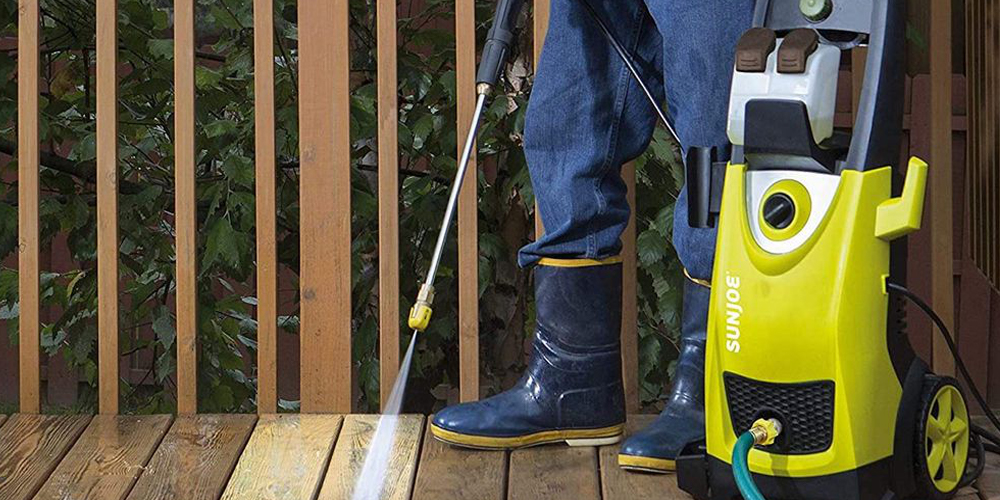Do you want to unleash the secrets of making a clean and crisp home? If so, you might want to consider pressure washing your house. A pressure washer is a machine that has been developed for cleaning purposes. The water is pressurized, and the high-pressure stream of water is used to remove dirt and other substances from surfaces. Pressure washers are often used to clean cars, driveways, decks, patios, sidewalks, and other outdoor surfaces and leave the owner satisfied.
Pressure washers are a great method to clean your patio, deck, driveway, and other surfaces. There are many different pressure washers on the market with each having unique features that make it stand out from the others. Get a pressure washer with the features you need to get the job done correctly.
Develop a cleaning plan to maintain areas that have been pressure washed, and implement best practices into your operating instructions. Pressure washing is a helpful go-to to save time and money. In addition, by knowing the regulation around stormwater pollution prevention, you can avoid fines and be satisfied by following the necessary steps for proper disposal.
The Practices Include the Following
Have a way of disposing of spent wash water
It’s helpful to know where water, contaminants, and dirt can go after washing. Common places these items will head are:
- If the ground is porous, it will seep into the soil.
- Into storm drains, to carry the untreated water & pollutants to a local pond or other body of water.
- Raw sewage is deposited into a sewer that automatically processes it before releasing treated water back into the environment
- Into a drainage ditch or trench leading to a nearby storm water retention pond or wetland.
Take your situation and needs into consideration so you can make the best choice for your work. Municipalities often require that permits be granted to release water into storm drains or sanitary sewer systems.
Lowering the water temperature
It’s important to understand what type of cleaning process is necessary for a specific stain or area. For example, you want to know if the stain you’re looking at will require steam cleaners or hot water washing. Pressure cleaning at lower temperatures often produces comparable results to using a more expensive and dangerous solvent. Citizens must meet a set of municipality regulations to maintain an appropriate water temperature. This is to protect aquatic life and prevent disruption in local temperature balances.
Learn more about the detergents and cleaners
There are so many environmental hazards just with cleaning products that seem safe. Biodegradable & non-toxic sound great but may not always be harmless. Biodegradables are enabled to break down into harmless materials and don’t harm the ecosystem. However, they still need to be used responsibly, not by pouring them down a drain or organizing a “cleaning frenzy” in the public garden. Meanwhile, “non-toxic” doesn’t have a standard definition and can still affect water quality. To preserve the quality of water, some municipalities require you to use cleaners or detergents that are biodegradable and non-toxic. You should collect and process them.
Spray after sweeping
Pressure washing is an perfect way to remove gross contamination from surfaces. First, sweep up the dirt & loose gravel. Next, soak up any spilled fluids and place those absorbents into appropriate storage containers for disposal. Unfortunately, water-damaged buildings have become more and more common nowadays, and disposing of the contaminants within them can be a challenge. However, this new technology will likely make cleaning much faster & cheaper, as it can remove any contaminants from water.
Keep wash water safely contained and clean to avoid contamination
You need to be aware that discharge water and contaminants must be collected if you are pressure washing unless you have a permit to discharge it. The most common ways of dealing with the discharge are:
- Making use of vacuums or booms with sump pumps for recollecting spent water, then cleaning any remaining debris
- Make sure there are drains on your property. Point the drainage toward low spots, and cover any other drains. The water will pool up, and you can collect it for recovery.
- For the drains, set inflatable pipe plugs
- Portable containment berms or pools can be useful in capturing waste water runoff.
Work with recycling units for the wash water
One way to recycle water is by installing units on fleet vehicles. You can also collect wash water and then process it out of contaminants back at a centralized location.
Protecting the drains
To keep your storm drains and pipes clean, you can use filtering mats and absorbent booms to catch sediments and trace oils before they reach these water pipes.
By implementing these measures, you’ll be preventing sediment, debris and other contaminants from reaching storm drains and sewage systems, which could cause blockages.











